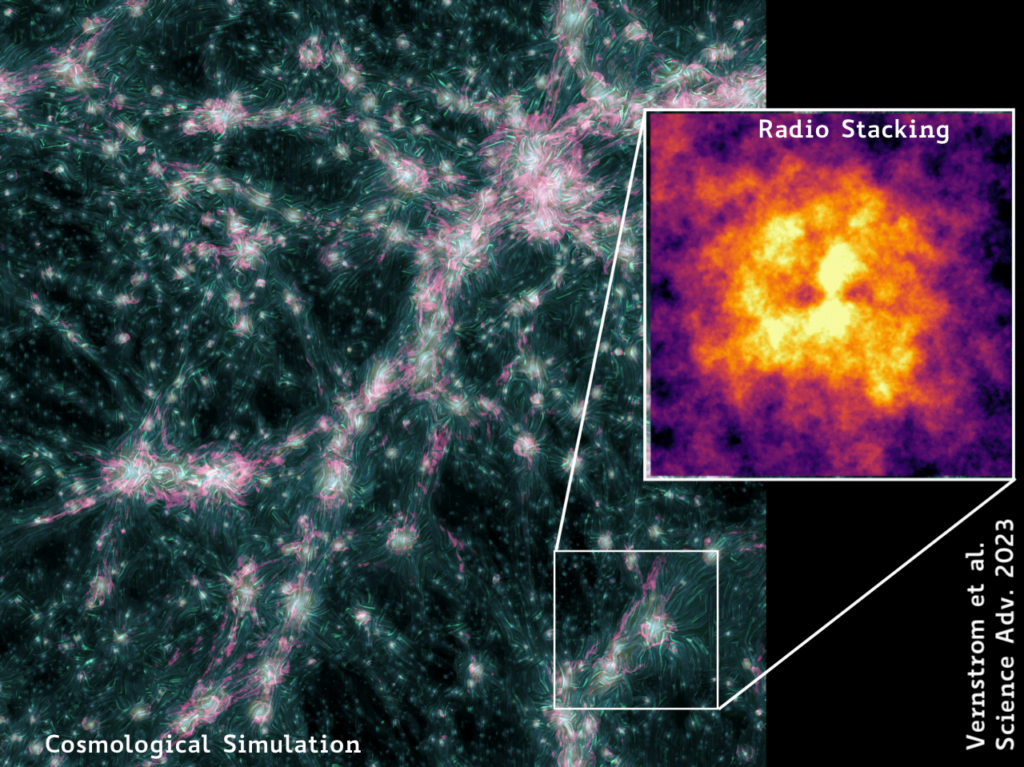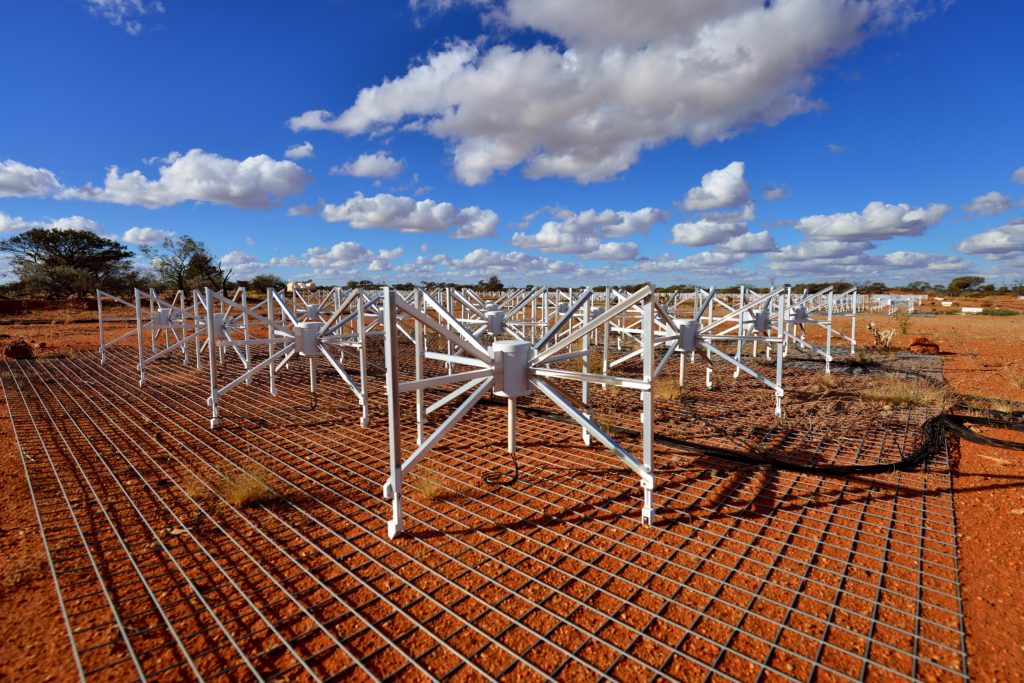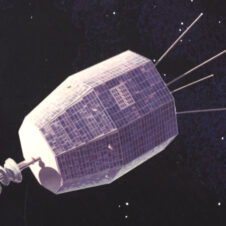ICRAR researchers discover tantalising evidence of magnetic fields in the Universe’s largest cosmic structures.
The cosmic web is how the Universe looks at its largest scal—an interweaving web of filaments and clusters full of gases and galaxies which wind around cosmic voids millions of lightyears across.
This Universe-spanning web was predicted by astrophysicists in the 1960s, with computer modelling giving us a glimpse of how this vast network truly looked in the 1980s.
Over the course of the past few decades, we’ve been able to map the Cosmic Web through observation, bringing with it the possibility of answering some of astronomy’s biggest questions.
An area of particular interest is how magnetic fields behave on a cosmic scale, and what role they play in both galactic and cosmic structure formation.
New research published today in Science Advances and led by the International Centre for Radio Astronomy Research (ICRAR) in partnership with CSIRO, Australia’s national science agency, is helping us to further understand these cosmic magnetic fields.
Dr Tessa Vernstrom from The University of Western Australia’s (UWA) node of ICRAR, is the lead author of the research and describes magnetism as a fundamental force in nature.
“Magnetic fields pervade the Universe—from planets and stars to the largest spaces in-between galaxies.”
“However, many aspects of cosmic magnetism are not yet fully understood, especially at the scales seen in the cosmic web.”
“When matter merges in the Universe, it produces a shockwave which accelerates particles, amplifying these intergalactic magnetic fields,” said Dr Vernstrom.

A composite image showing the magnetic fields of the cosmic web, featuring a pull out of how radio data was stacked. (Credit: Vernstrom et al. 2023)
Her research has recorded radio emissions coming from the cosmic web—the first observational evidence of strong shockwaves.
This phenomenon had previously only been observed in the Universe’s largest galaxy clusters and was predicted to be the ‘signature’ of matter collisions throughout the cosmic web.
“These shockwaves give off radio emissions which should result in the cosmic web ‘glowing’ in the radio spectrum, but it had never really been conclusively detected due to how faint the signals are.”
Dr Vernstrom’s team began searching for the cosmic web’s ‘radio glow’ in 2020 and initially found signals which could be attributed to these cosmic waves.
However, as these initial signals could have included emissions from galaxies and celestial objects other than the shockwaves, Vernstrom opted for a different signal type with less background ‘noise’—polarised radio light.
“As very few sources emit polarised radio light, our search was less prone to contamination, and we have been able to provide much stronger evidence that we are seeing emissions from the shockwaves in the largest structures in the Universe, which helps to confirm our models for the growth of this large-scale structure.”

Data from the Murchison Widefield Array (MWA) radio telescope in Western Australia provided all-sky radio maps for the research. (Credit: Dragonfly Media)
The research utilised data and all-sky radio maps from the Global Magneto-Ionic Medium Survey, the Planck Legacy Archive, the Owens Valley Long Wavelength Array, and the Murchison Widefield Array, stacking the data over the known clusters and filaments in the cosmic web.
The stacking method helps to strengthen the faint signal above the image noise, which was then compared to state-of-the-art cosmological simulations generated through the Enzo Project.

A single frame from the simulation during the final “time step” displaying different layers. The yellow shows the temperature and gas density of the cosmic web. The red shows the radio emission from the shocks and the blue lines show the magnetic field lines. (Credit: Vazza F; ENZO; Piz-Daint CSCS (Lugano))
These simulations are the first of their kind to include predictions of the polarised radio light from the cosmic shockwaves observed as part of this research.
Our understanding of these magnetic fields could be used to expand and refine our theories on how the Universe grows and has the potential to help us solve the mystery of the origins of cosmic magnetism.
Dr Vernstrom has written further on the process and results of their research on The Conversation, which you can read here.
ENDS
PUBLICATION
‘Polarized Accretion Shocks from the Cosmic Web’, published in Science Advances on February 15th, 2023:
http://www.science.org/doi/10.1126/sciadv.ade7233
SUPPORTING MEDIA
Accompanying images are available from this link.
MORE INFORMATION
ICRAR
The International Centre for Radio Astronomy Research (ICRAR) was founded in 2009 to support Australia’s bid to host the world’s largest radio telescope, the Square Kilometre Array, representing one of the largest scientific endeavours in history.
Constituting a joint venture between Curtin University and the University of Western Australia, and proudly supported by the Government of Western Australia, ICRAR has grown into an internationally renowned, multi-disciplinary research centre for science, engineering, and data intensive astronomy, and is one of the top 5 astronomy centres in the world.
Our prize-winning team of 135 researchers from more than 32 countries includes an ARC Laureate Fellow, several ARC Future Fellows, and several Forrest Fellows.
Our Translation and Impact team works closely with industry, government, and communities to share our wealth of expertise and to help business grow.
More than half of ICRAR projects involve partnerships with international research institutions, and approximately 300 scientific papers are published annually in prestigious peer reviewed journals.
To learn more, visit icrar.org
THE ENZO PROJECT
Enzo is a community-developed adaptive mesh refinement simulation code, designed for rich, multi-physics hydrodynamic astrophysical calculations.
The base simulation was produced by Franco Vazza (U. of Bologna/INAF/Hamburger Sternwarte) with the polarisation processing done by Denis Wittor (Hamburger Sternwarte).
The simulation ran for 1.5 million hours on 2400 processors of Piz-Daint (http://www.cscs.ch).
Addition information on Enzo can be found at http://enzo-project.org with samples of the simulations are available at https://cosmosimfrazza.myfreesites.net/the_magnetic_cosmic_web.

